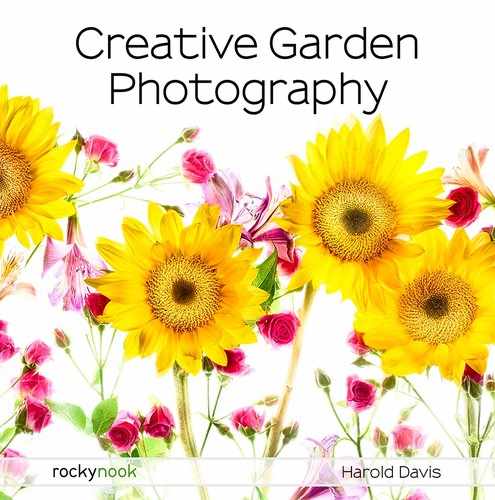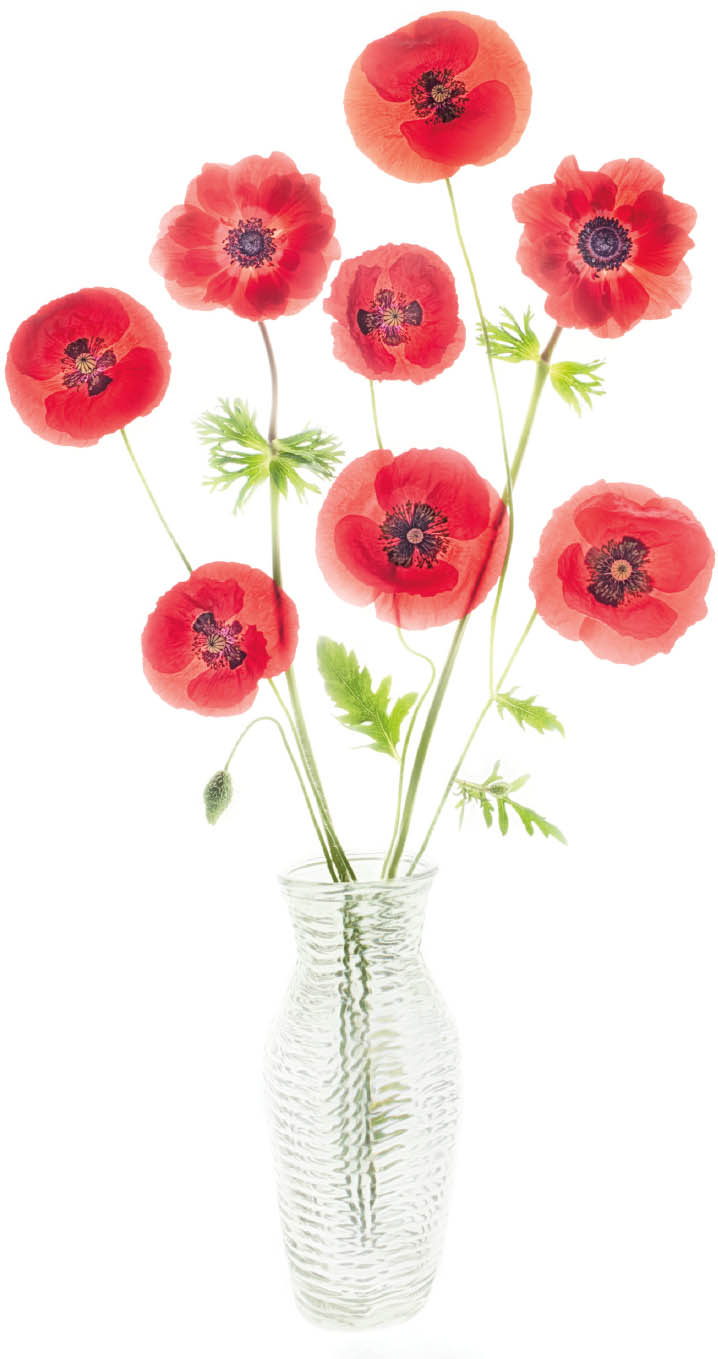Notes & Resources
Where to Go for More Information
Creative Garden Photography explores many different aspects of photography, not all of which can be covered in the depth that is deserved in a single volume.
Learning to become fluent in Adobe software, specifically Lightroom Classic and Photoshop in the context of photography, is a major endeavor. I tell workshop students that the best approach to learning this software will depend on how they like to learn things. For some folks, a course at a local community college might be a great way to learn Lightroom and Photoshop.
If you are the kind of person who learns from books, you might want to check out my books The Photoshop Darkroom (Focal Press, 2009) and The Photoshop Darkroom 2 (Focal Press, 2011).
The section on black and white photography in this book relies on and is greatly expanded in two books of mine, The Photographers Black & White Handbook (Monicelli Press, 2017), and Creative Black & White, 2nd Edition (Rocky Nook, 2019).
You can find most of my books on my Amazon author page, amazon.com/author/harold.
If you are interested in further exploring my ideas about photographing flowers for transparency on a light box, you’ll find information in webinars I present and in the FAQs on my website at digitalfieldguide.com/faqs.
A number of my online courses and live webinars can be found at digitalfieldguide.com/learning. Also, recordings of previous talks and webinars can be found on my YouTube channel, aptly named Harold Davis Photography.
Contacting Harold Davis
My website is digitalfieldguide.com. This website has FAQs, learning resources, photos (of course!), and a great deal of information about gardens, photography, and travel (and about yours truly!).
You might be interested in my photography blog, digitalfieldguide.com/blog, and my workshops page, digitalfieldguide.com/workshops-events.
You can subscribe to my newsletter and blog feed at digitalfieldguide.com/about/subscribe.
If you are interested in following me on photographic social media, you can find me on Flickr, and on Instagram I am @haroldldavis.
I appreciate hearing from readers who are interested in my books and my work. Write to me at [email protected].
Software in Creative Garden Photography
Adobe Camera Raw (ACR), Bridge, Lightroom CC, Lightroom Classic, and Photoshop are products of Adobe Systems Incorporated. You can find them at abobe.com, and they are available in a monthly subscription as a “photographer’s bundle” or as part of the Adobe Creative Cloud product.
Color Efex Pro, HDR Efex Pro, and Silver Efex Pro are available from DxO, dxo.com.
Perfect B&W is a product of On1, Inc., on1.com, and runs either as part of the On1 Photo RAW suite, or as a plug-in within Lightroom Classic or Photoshop.
Topaz B&W Effects, found at topazlabs.com, is a great black and white conversion tool, and runs as part of the Topaz Suite or as a plug-in within Lightroom Classic or Photoshop.
Recommended iPhone Apps
I have included a number of iPhone photographs in this book. I do feel that the best camera to use is the one you have with you, and most of us usually do have our phones with us. If you are interested in iPhoneography, below are the apps that I most often use to process my garden images:
Image Blender—I use this straightforward app to blend and combine two different versions of the same image.
Snapseed—This is my “go-to” iPhone app for all kinds of processing, including sharpening, HDR, black and white conversion, and more.
Waterlogue—This great and easy-to-use app creates a watercolor look from any photo.
Garden Resources
I have nothing against buying cut flowers from a florist or another source, such as a supermarket. Indeed, I do this all the time! However, for some kinds of flower photography, the only workable approach is to grow the flowers oneself so that one has colorful, fresh, and unusual specimens to work with. It’s a good idea to work with a local horticultural nursery to get started in this endeavor. Here are some specialized companies that are good sources for flowering plants:
- Annie’s Annuals & Perennials: A great source for rare and unusual flowering seedlings, anniesannuals.com.
- Jackson & Perkins: Over one hundred years old, and a great source for roses, jacksonandperkins.com.
- Olallie Daylily Gardens: There’s no place like Olallie for daylilies and irises, daylilygarden.com.
- Swan Island Dahlias: A magnificent source for dahlias, dahlias.com.
- White Flower Farm: High-quality flowering plants for all climates, whiteflowerfarm.com.
Sensor Size Matters
I have included technical caption data with the photos in this book because I believe that one of the best ways to learn photography is to study images and figure out how they were made.
About EXIF Data
Sensor size information in the technical captions primarily comes from the EXIF data automatically compiled by the camera and transferred to the computer when my RAW files are processed.
EXIF data as recorded in a RAW file is quite accurate for the aperture (f-stop) and ISO used on each exposure, with the caveat that the aperture recorded is sometimes the effective aperture. For example, the effective aperture using a macro lens focused close can be a smaller opening than the lens nominally will stop down to. This explains why a lens may have a minimum aperture of f/22, but be recorded at an effective aperture of, for example, f/45, when using an extension tube. Of course, the reduction in aperture also reduces the light hitting the sensor.
Shutter speeds are recorded accurately for single exposures. They are a little more problematic in the case of HDR blends, where the EXIF data is either left blank, or records the data of the first exposure in the blend. With the HDR photos shown in this book, I either noted the shutter speeds at the time I made the images, or went back to the RAW files and checked out the shutter speeds by inspecting the individual files.
In summary, leaving the issue of effective apertures aside, the technical information in the captions is primarily drawn from the EXIF data recorded by the camera, occasionally supplemented by my own observations and notes.
Focal Length
With the focal length of the lens used, when the focal length is recorded in the EXIF data, it is accurate, but what the focal length means depends upon the sensor size of the camera. Not all sensors are the same size. The smaller the sensor, the closer a given focal-length lens brings you to your subject. For example, if a sensor has half the area of another sensor, then a specific focal-length lens will bring you twice as close on a camera with the smaller sensor.
Since different cameras have different-sized sensors, it is not always possible to have a uniform vocabulary of lens focal lengths. Thus, people compare focal lengths to their 35mm film equivalent by adjusting for the sensor size.
To make the comparison with 35mm film focal lengths, you need to know the ratio of your sensor to a frame of 35mm film, which is called the focal-length equivalency. For reference, a 50mm lens on a full-frame camera is considered “normal.” This is roughly comparable to the central angle of view of a human eye, which is between 40–60 degrees.
Lenses that are shorter than 50mm on a full-frame camera are considered wide angle, and lenses that are longer and bring things closer are telephotos.
To compute the comparable focal lengths on your own camera if your sensor has a different sensor size than mine, you need to know the focal-length equivalency factor of your sensor. You can check your camera manual for this information. Additionally, some cameras that are not full frame report their focal-length data using full-frame focal-length equivalencies, rather than the actual focal lengths (the Sony RX100 is an example).
Cameras and Lenses
I noted the camera I used as part of the technical capture data. The Nikon D850, D810, and D800 cameras, which were used for the bulk of the images in this book, are all full-frame cameras. The Nikon D300, D200, and D70 cameras, which were used for some of the photos, all have a 1.5 focal-length equivalency.
In other words, a 28mm focal length on a Nikon D300 would be equivalent to a 42mm focal length on a full-frame camera, such as the Nikon D850.
Note that when there is no specific brand given for the lens in a technical caption, it is probably a Nikkor (a Nikon lens). Furthermore, if only a focal length is given, the lens is almost certainly my “walking-around” Nikkor AF-S Zoom 28–300mm F/3.5–5.6 on the full-frame Nikon DSLRs (D850, D810, and D800). The comparable lens I used in the past for the 1.5 crop-factor Nikons (D300, D200, and D70) was the Nikkor Zoom 18–200mm.
Study in Scarlet—I used a bracketed sequence to photograph these two different types of red flowers, anemones and poppies, in a vase on a white seamless-paper background.
Nikon D810, 55mm Zeiss Otus, eight exposures at shutter speeds ranging from 1/25 of a second to 5 seconds, each exposure at f/13 and ISO 64, tripod mounted.

